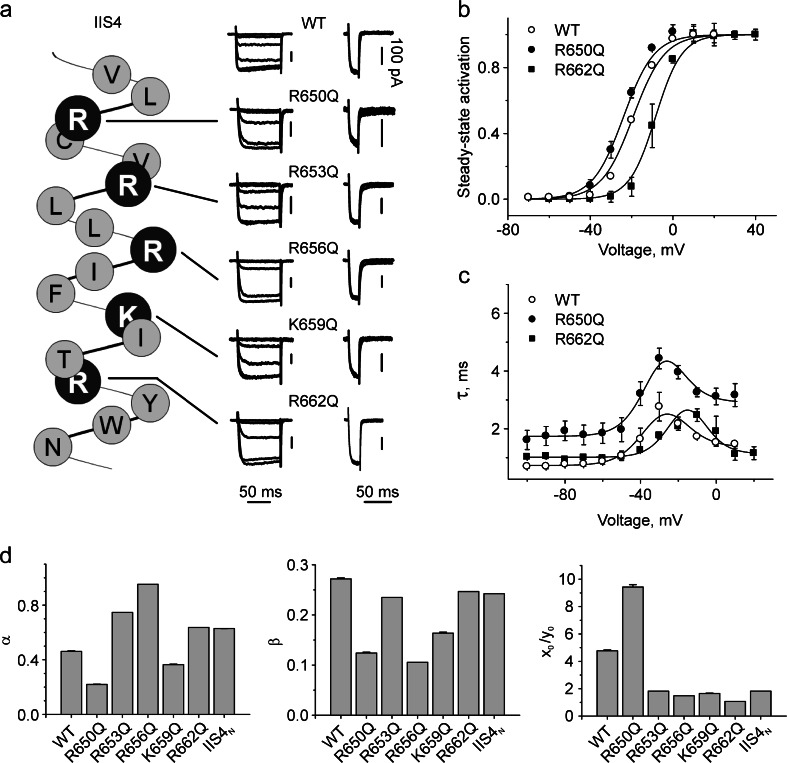Fig. 1.
Effects of charge-neutralizing mutations in segments IIS4 on CaV1.2 gating. a The left panel shows an α-helical representation of the amino acid sequence of segment IIS4 of the α1-1.2 subunit. Substituted (positively charged) residues are shown in black. The middle panel shows representative families of I Ba through wild-type and mutant channels starting from threshold potential (−50 mV). Barium currents were evoked during depolarizing test pulses from a holding potential of −100 mV (increments, 10 mV). The right panel shows representative tail currents of wild-type and mutant channels. Currents were activated during a 20-ms conditioning repolarization to 0 mV. Deactivation was recorded during subsequent repolarizations with 10-mV increments, starting from −100 mV. Vertical scale bars represent 100 pA. b, c Voltage dependences of steady state activation of mutations R650Q and R662Q inducing the largest leftward ΔV 0.5(R650Q) = − 4.1 ± 1.2 mV or rightward ΔV 0.5(R662Q) = 10.3 ± 1.6 mV shifts compared to wild type (B) and time constants of activation/deactivation (C) of the indicated channel construct. Solid lines represent model simulations based on the identified model parameters (see Table 1). d Rate constants of channel opening and closure (alpha, beta, x 0/y 0) for WT and single charge neutralizations in segment IIS4

